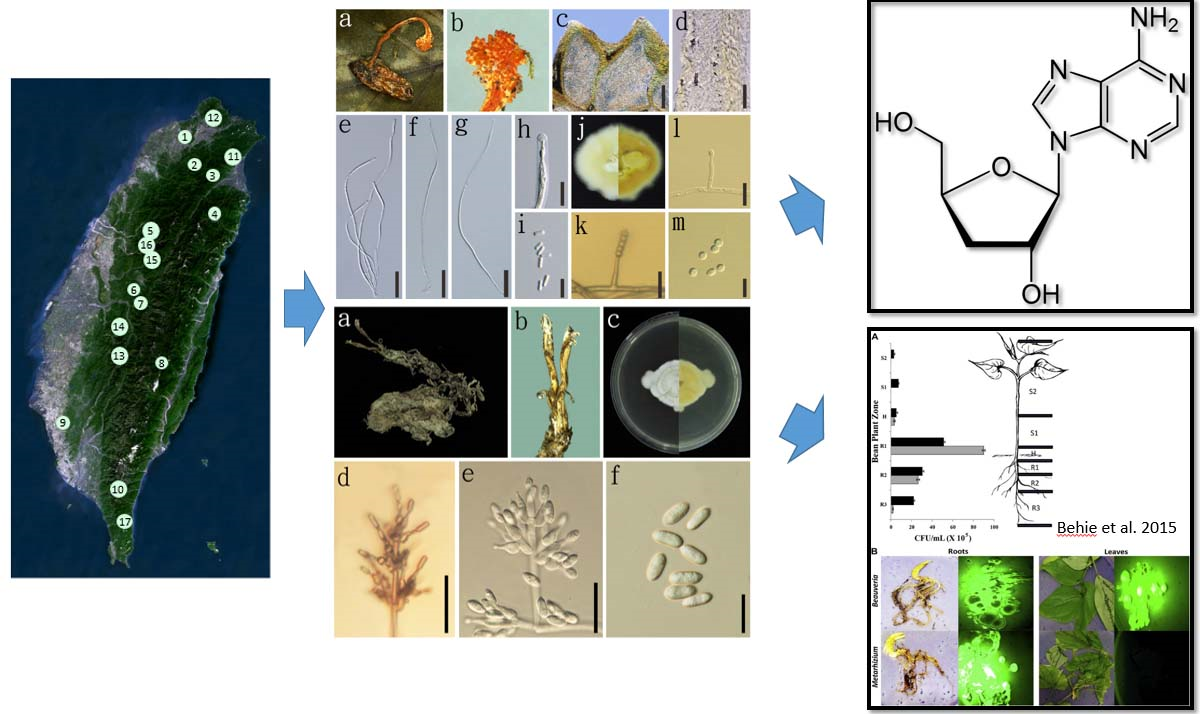臺灣蟲生真菌的分子生態學及病蟲害整合管理應用
蟲生真菌在昆蟲生物防治方面展現了卓越的潛力,廣泛應用於農業以取代傳統的殺蟲劑使用。這類真菌在形態上多樣、親緣演化上差異顯著,且在生態系統中具有極高的多樣性。以北蟲草(Cordyceps militaris 又稱蛹蟲草、北冬蟲夏草) 為例,其作為補品和傳統中藥材廣受歡迎,並能產生多種生物活性物質,包括蟲草素、多醣體、麥角固醇及纖溶酶等。
這些次級代謝物在醫療上展現出廣闊的應用前景,涵蓋抗病毒、抗真菌、抗高脂血症、抗發炎、抗白血病及抗癌等多種功效。目前,我們致力於研究臺灣蟲生真菌的分子生態學及其在病蟲害整合管理中的應用潛力。同時,我們與沈湯龍教授合作,深入分析蟲生真菌豐富的生物活性物質及其應用可能性,期望能為未來的研究與應用提供堅實的科學基礎。

The Molecular Ecology & Integrated Pest Management Applications of Entomopathogenic Fungi in Taiwan
Entomopathogenic fungi are outstanding agents for biological insect control, widely utilized in agricultural applications as alternatives to chemical insecticides. These fungi exhibit diverse morphologies, considerable phylogenetic variation, and ecological versatility. Notably, species such as Cordyceps militaris are highly valued as dietary supplements and traditional medicinal materials. These fungi produce a variety of bioactive compounds, including cordycepin, polysaccharides, ergosterol, and fibrinolytic enzymes. These secondary metabolites demonstrate promising therapeutic potential, with antiviral, antifungal, antihyperlipidemic, anti-inflammatory, antileukemic, and anticancer properties.
Currently, our research is focused on the molecular ecology of entomopathogenic fungi in Taiwan and integrated pest management strategies. In collaboration with Professor Tang-Long Shen, we are analyzing the diverse bioactive compounds produced by these fungi and exploring their potential applications.